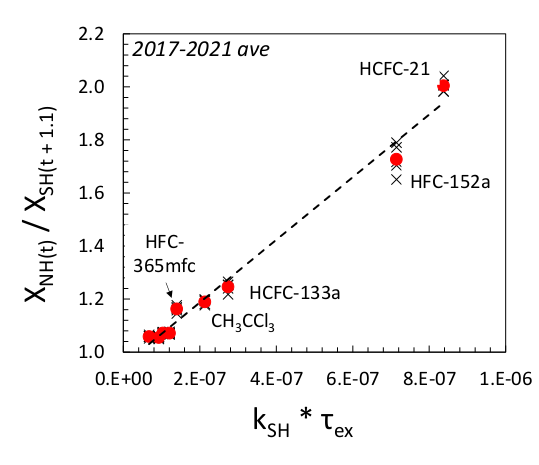Investigating Trace Gases other Than CH3CCl3 for Supplying Useful Information About Atmospheric Hydroxyl Radical Abundance and Variability on Broad Scales.
S. Montzka1, I. Vimont2,1, F.L. Moore2,1, G.S. Dutton2,1, B. Hall1, S. Clingan2 and K. Petersen2
1NOAA Global Monitoring Laboratory (GML), Boulder, CO 80305; 720-295-9701, E-mail: stephen.a.montzka@noaa.gov
2Cooperative Institute for Research in Environmental Sciences (CIRES), University of Colorado, Boulder, CO 80309
Constraints on hemispheric- to global-scale hydroxyl radical concentrations [OH] are important for understanding changes in the atmospheric abundance of methane and other long-lived gases primarily removed from the atmosphere via oxidation by OH. The usefulness of constraints on [OH] supplied by the analysis of CH3CCl3 observations has degraded in recent years, such that alternative approaches are desperately needed. We have investigated other trace gases for supplying constraints on [OH] using approaches that are less sensitive to budget considerations, given that independent estimates of emissions required for such approaches often contain substantial uncertainties that are difficult to assess. Many gases we regularly measure exhibit atmospheric distributions that clearly reflect loss due to OH oxidation processes. Initial results suggest that an analysis of these distributions can provide insights into OH concentrations on broad atmospheric scales. In this presentation we’ll investigate the robustness of those constraints and their sensitivity to parameters such as mean transport times for air between the hemispheres, among other processes and variables.
Figure 1. The lagged mean hemispheric mole fraction difference observed for multiple trace gases from 2017-2021 as a function of their rate constant for reaction with the hydroxyl [OH] radical. The slope in this plot (1.2 x 106 radicals cm3) is thought to provide an estimate mean of OH concentration for the tropics and much of the southern hemisphere.

